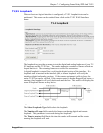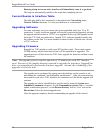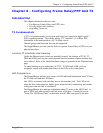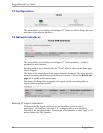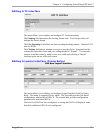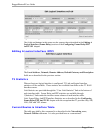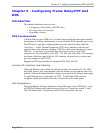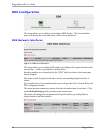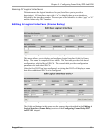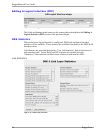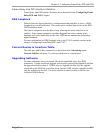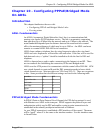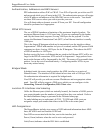
Chapter 9 - Configuring Frame Relay/PPP And DDS
Chapter 9 - Configuring Frame Relay/PPP And
DDS
Introduction
This chapter familiarizes the user with:
• Configuring Frame Relay and PPP Links
• Viewing status and statistics
• Upgrading software
DDS Fundamentals
A Digital Data Services (DDS) line is a North American digital transmission method
that operates at 56 Kbps synchronously over an unloaded, 4-Wire metallic-pair circuit.
The DDS line is typically a telephone grade network connection often called the
“local loop”. A Data Terminal Equipment (DTE) device attaches to the line and
transmits data to the telephone company (TELCO), which routes the data to a remote
DDS line. A short-haul, synchronous-data line driver known as a CSU/DSU
terminates the line and attaches to the DTE. The DSU part of the DSU/CSU manages
the format of the data signal while the CSU manages electrical levels, isolation and
provides loopback to the TELCO.
RuggedCom DDS port provides an integrated DTE, DSU and CSU.
Location Of Interfaces And Labeling
Unlike the Ethernet ports (which are statically located), the location of T1/E1, DDS
and ADSL ports in your router depends upon the number of ports and how they were
ordered. Refer to the labeled hardware image as presented in the Webmin home page.
To make labeling easy to understand, all T1E1, T3, DDS and ADSL ports are
assigned a unique port number that relates to the LEDs on the status panel.
LED Designations
The RuggedRouter indicates information about DDS ports on the LED Panel. A pair
of LEDs will indicate traffic and link status of the port. Consult the section “Using
The LED Status Panel” to determine which LEDs correspond to the port.
RuggedCom 83



